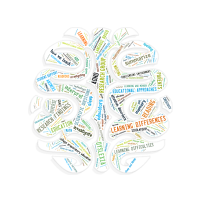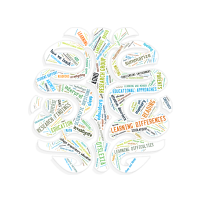

Lab Faculty and Staff
10/20/2017
Cultivating Motivational Resilience
What do we know about the brain pathways that support motivation?
How does project based learning foster student motivation?
Have you ever stayed up past when you know you ought to be in bed to look at one last student sample or send one more email? Have you ever gritted your teeth to grind through the last few minutes of a match or a grueling workout? Have you ever lost a game on an app against a friend and zealously challenged her to a rematch? If any of these sounds familiar, then you know how it feels to respond to challenge with motivation.
Today and in the coming weeks, we will explore how motivation interacts with experiences of challenge and failure. First, we will address how teachers can facilitate a positive response to failure, such that students are equipped to maintain or increase their motivation for academic tasks. We will then look at models relating failure and motivation, as well as both maladaptive and adaptive reactions to failure. Finally, we’ll examine individual factors that impact the complex relationship between failure and motivation.
So, what counts as failure? As you might expect, ‘failure’ is experienced differently across contexts and individuals; what feels like a serious failure to you, may be experienced as a minor setback by someone else. The experience of failure depends upon the context as well as other factors, such as the individual’s outlook and priorities. In sports, for example, losing a game or being benched might constitute failure. In school, failure might be a poor grade on a test or a teacher’s critical comment on an essay. Others might think of failure as experiencing a challenge or setback during a project, not reaching completion of a task, or falling behind one’s peers.
Those of us who work with students want to encourage them to be academic risk takers, that is “student[s] with a preference for difficult tasks, a tolerance for failure, and the capability to use strategies flexibly when confronted with obstacles.” (1) We want students to focus on mastery (i.e., full understanding) versus just besting their peers or getting high marks. Teachers who strive for the following can help their students cultivate a stronger sense of motivational resilience in the face of failure (2):
- conveying warmth and interest
- creating a sense of community
- consistently exhibiting a positive, supportive attitude
- displaying humor and passion for learning
- creating a structured environment (reasonable expectations, clear and appropriate boundaries, and consistent discipline)
- providing students with meaningful work with real-world applications
- encouraging growth (versus fixed) mindset
- focusing on learning goals (versus competition or high performance)
- valuing student choices and preferences (and giving clear rationales for activities that are not intrinsically fun)
- varying levels of challenge presented in tasks
- providing reinforcement of students’ attempts or perseverance (versus only their successes)
- offering appropriate kinds of feedback: more on this topic in future summaries
How does failure dampen motivation -- and how can we encourage students to persevere in the face of failure? Stay tuned for next week’s installment!
Click on the following links for further reading on this topic:




